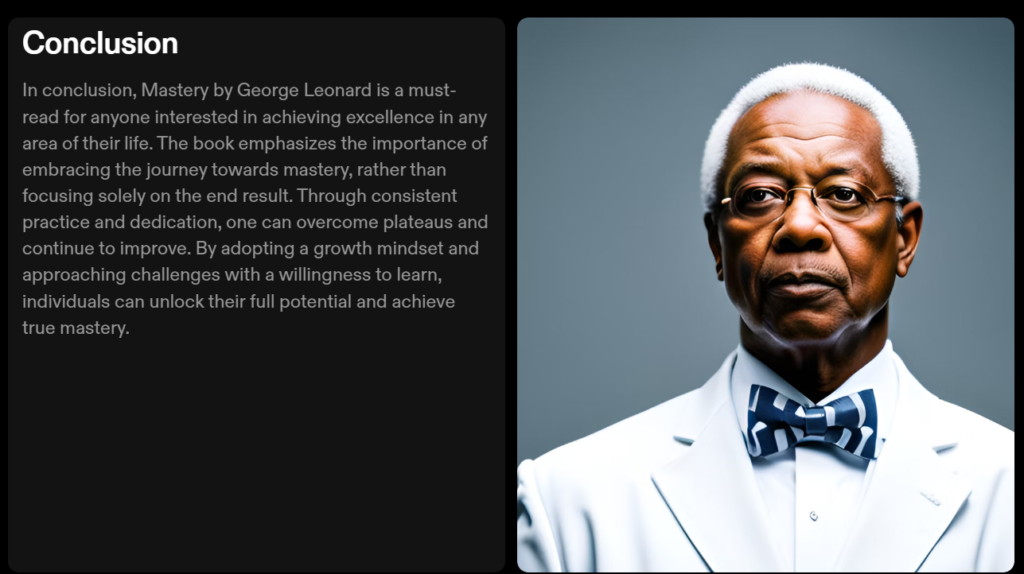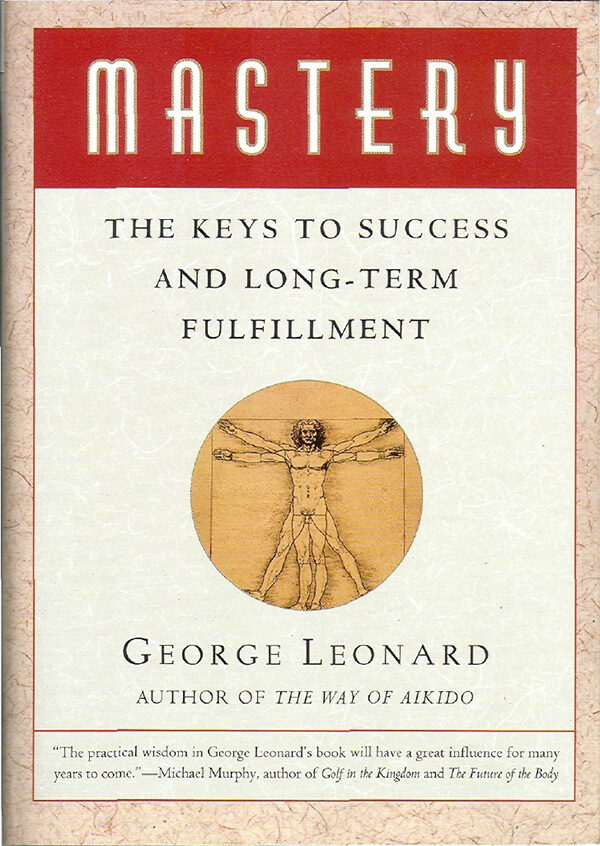🔥 🚀 The Book in 3 Sentences
- George Leonard wrote a brilliant book about the approach of a master in any field.
- This book helps separate the journey from the destination of learning anything.
- When you practice, you naturally feel a resistance to change due to homeostasis. Negotiation is the ticket to successful long-term change in everything from increasing your running speed to transforming your organization.
🎨 Impressions
It’s a book that helps ease the pressure. Usually when learning a new skill, we tend to get bored after a while and feel that we are not learning fast enough or there has been no significant progress in learning however the book tells you that that phase is the most critical and the next moment of growth is just around the corner.
It ensures our focus is on the process. The goalless practice of the process is the first step towards becoming a master.
I read the book with the lens of Mr. Sachin Tendulkar. Every statement about practice, I thought of Sachin, and how he approached his cricketing game. He didn’t want to be the highest run-getter. His focus was solely on practice, and improving his game. The book says that the Master is the one who stays on the mat, 1 minute longer than everybody else. How true was it for Sachin? He was the last to leave and first to arrive.
If we ever plot a curve of the learning process, we will see that there will be a flat line (Plateau) and then there would be a slight peak of learning and then again a flat line. Contrary to general belief, the learning process is not a steep linear line but more like a step-by-step improvement process.
This book classifies the learners in 3 different categories.
- The Dabbler – loves the shine of newness. The falloff from his first peak comes as a shock.
- The Obsessive – The obsessive is a bottom-line type of person, not one to settle for second best. He or she knows results are what count, and it doesn’t matter how you get them, just so you get them fast.
- The Hacker- willing to stay on the plateau indefinitely
The Dabbler, Obsessive, and Hacker are all learners in their own fashion, but lifelong learning is the special province of those who travel the path of mastery, the path that never ends.
In the long run, the war against mastery, the path of patience, and dedicated effort without attachment to immediate results is a war that can’t be won. – This point illustrates that in today’s get-rich-quick culture or the reel culture, there is not enough patience to enjoy the process. The road of mastery is less traveled as everyone is so focused on quick results.
👤 Who Should Read It?
Every living human being. The book opens with the comparison of Humans to chimps. It shows how human babies do the most complex of tasks such as understanding the language, fairly comfortably. Which means we became the superior creature by learning. This means we all know how to learn anything but where we all differ is in pursuing. Our approach towards learning is what differentiates us. So read the book to identify which type of learner are you and how you can overcome some of the common challenges in learning. This is the way to become a master of anything, any skill, any art.
☘️ How the Book Changed Me
It also taught me that while learning new things, you would hit an area of plateau where things might not sound exciting. That is when your routine should kick in and you should continue to do your practice, irrespective of what you feel about the plateau. You should enjoy being where you are, rather than be worried about where you should have been in the skill. Then there comes a moment of growth for which the wait was all worth it. It really happened to me when I was learning “How to build your own website.” This was totally out of my comfort zone. I really enjoyed the learning process as there was no pressure of deadline. It helped me build my website – RollingTales.in and I am really happy with the outcome.
Humans are creatures of habit. Taking a queue from this, I have been focussed this year on following healthy habits. And being a quality professional, I tracked the progress via Metrics. I became obsessed with metrics. Reading this book, changed that perspective. My aim was to follow good habits (such as exercise, reading, writing, etc.). I should track them but not get overburdened by the numbers. Practicing them should become an integral part of your daily life. It really helped me focus on the bigger picture and eased a lot of pressure from the mind.
🔥 ✍️ My Top Quotes
- Man is a learning animal.
- Goals and contingencies are important. But they exist in the future and the past, beyond the pale of the sensory realm. Practice, the path of mastery, exists only in the present.
- To love the plateau is to love what is most essential and enduring in your life.
- All those chores that we can’t avoid: Reclaim the lost hours by making everything part of our practice.
- We fail to realize that mastery is not about perfection. It’s about a process, a journey. The master is the one who stays on the path day after day, year after year. The master is the one who is willing to try, fail, and try again, for as long as he or she lives.
- For a master, the rewards gained along the way are fine, but they are not the main reason for the journey. Ultimately, the master and the master’s path are one. And if the traveler is fortunate—that is, if the path is complex and profound enough—the destination is two miles farther away for every mile he or she travels.
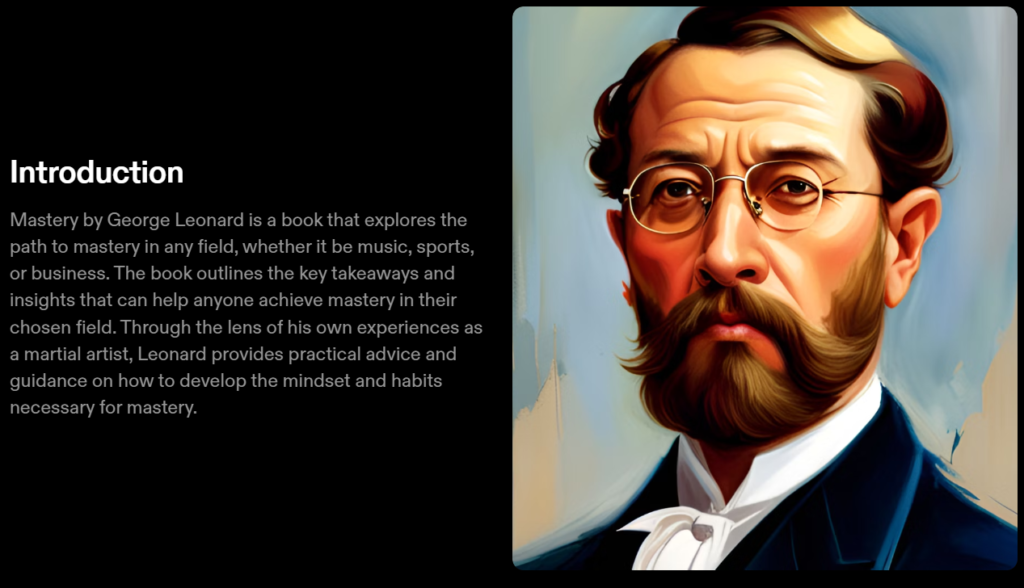
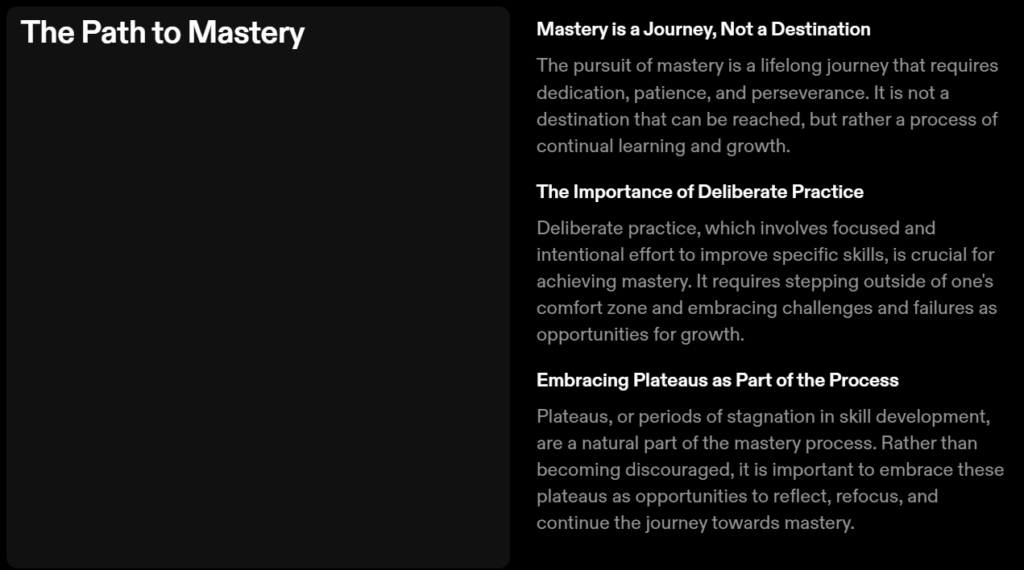
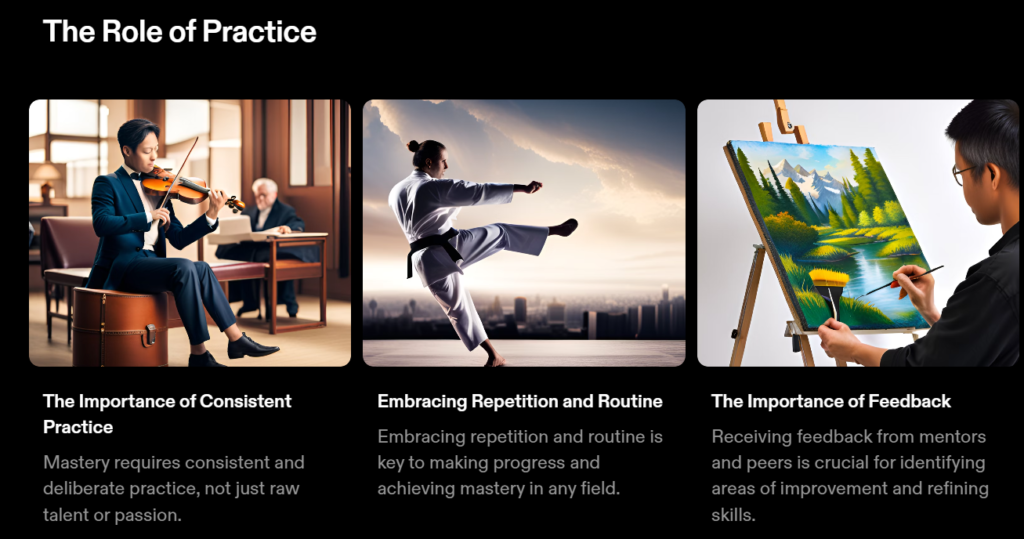
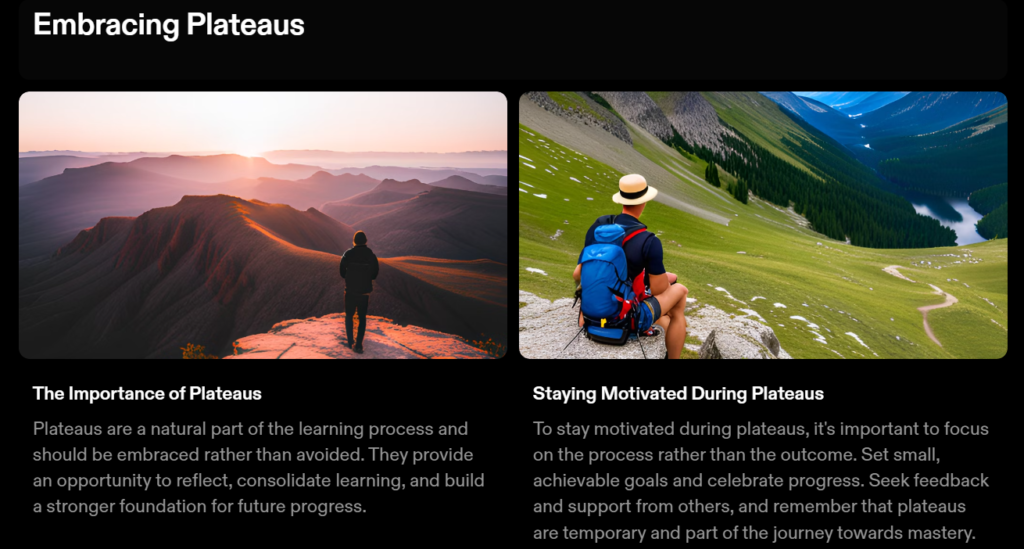
⚙ Chapter-wise summary of the book
The book illustrates 5 steps to master anything in life –
1. Instructions
- There are things can you learn on your own but the best this you can do is arrange for first-rate instructions. you may enjoy self-learning as it is equivalent to exploring and you may chance at unknown territories but that’s a chance journey.
- A teacher takes delight in being surpassed by his students. instructions/teachers required certain humility
- To see the teacher clearly, look at the students.
- Knowledge, expertise, technical skill, and credentials are important, but without the patience and empathy that go with teaching beginners, these merits are nothing.
2. Practice
- Practice is not something you do but something you have, something you are. Practice is a path upon which you travel, just that
- A practice (as a noun) can be anything you practice on a regular basis as an integral part of your life—not in order to gain something else, but for its own sake.
- For a master, the rewards gained along the way are fine, but they are not the main reason for the journey. Ultimately, the master and the master’s path are one. And if the traveler is fortunate—that is, if the path is complex and profound enough—the destination is two miles farther away for every mile he or she travels.
- What is mastery? At the heart of it, mastery is practice. Mastery is staying on the path
3. Surrender
- The essence of boredom is to be found in the obsessive search for novelty. Satisfaction lies in mindful repetition, the discovery of endless richness in subtle variations on familiar themes.
- For the master, surrender means there are no experts. There are only learners.
4. Intentionality
- Thoughts, images, and feelings are indeed quite real. Einstein’s thought that energy is equal to mass times the speed of light squared (E = MC2) eventually unleashed awesome power. The transformation of that thought into heat and percussion was a long and arduous process. Still, the thought, the vision, the intentionality, was primary.”All I know,” said Arnold Schwarzenneger, “is that the first step is to create the vision, because when you see the vision the beautiful vision that creates the ‘want power.’ For example, my wanting to be Mr. Universe came about because I saw myself so clearly, being up there on the stage and winning.”
- Intentionality fuels the master’s journey. Every master is a master of vision.
5. The Edge
- They are zealots of practice, connoisseurs of the small, incremental step. At the same time—and here’s the paradox people, these masters, are precisely the ones who are likely to challenge previous limits, to take risks for the sake of higher performance, and even to become obsessive at times in that pursuit. Clearly, for them the key is not either/or, it’s both/and.
- Before you can even consider playing this edge, there must be many years of instruction, practice, surrender, and intentionality. And afterward? More training, more time on the plateau: the never-ending path again
In Conclusion
